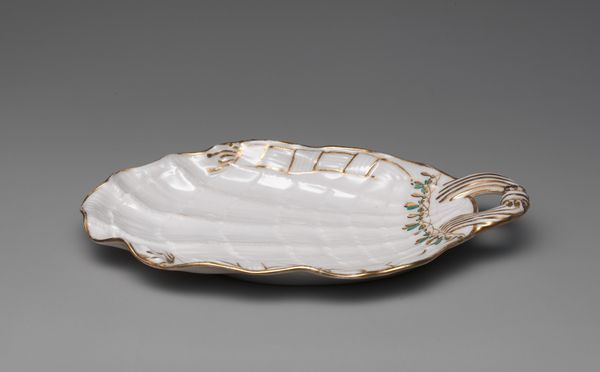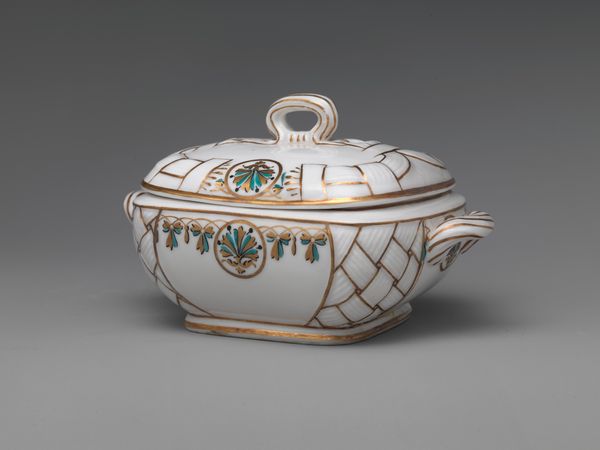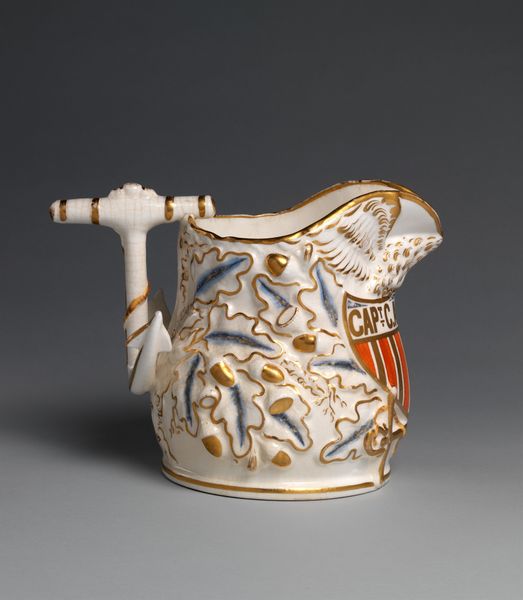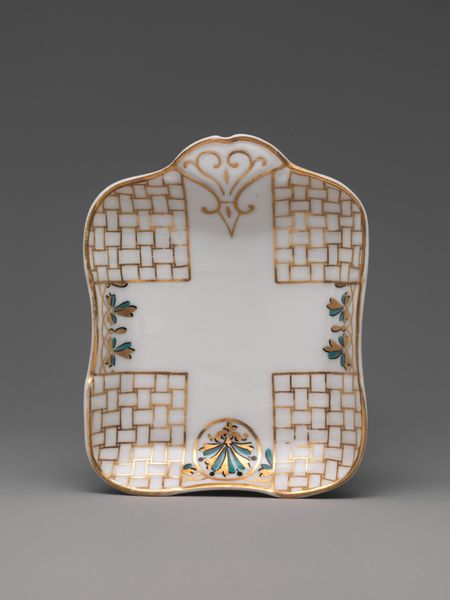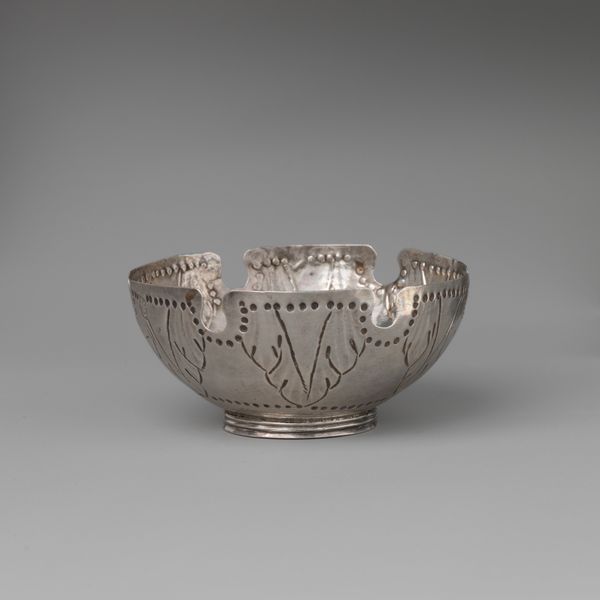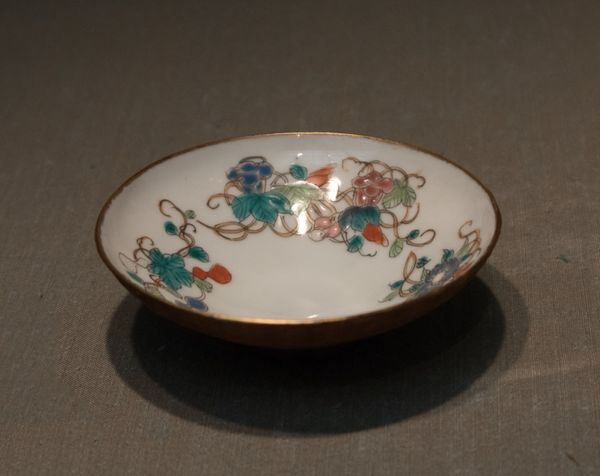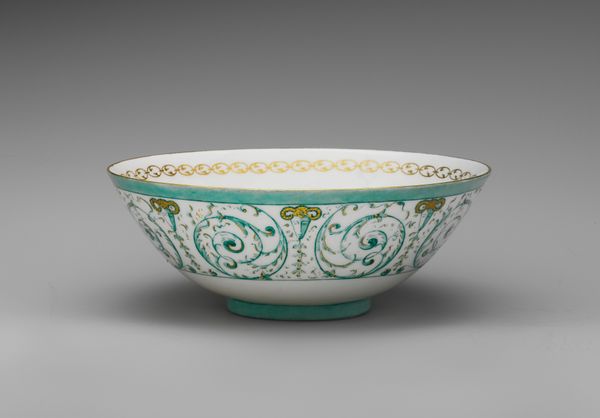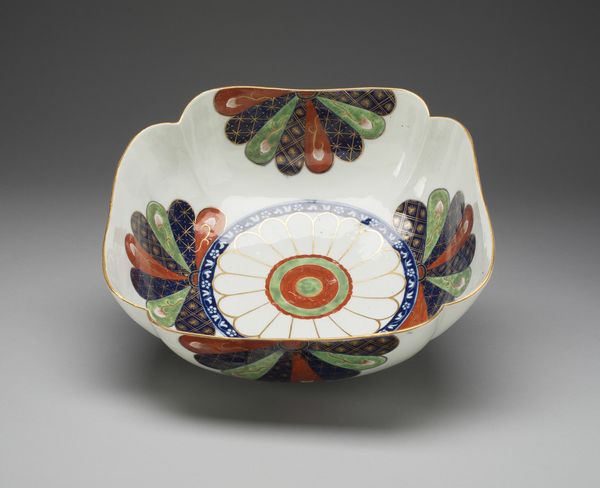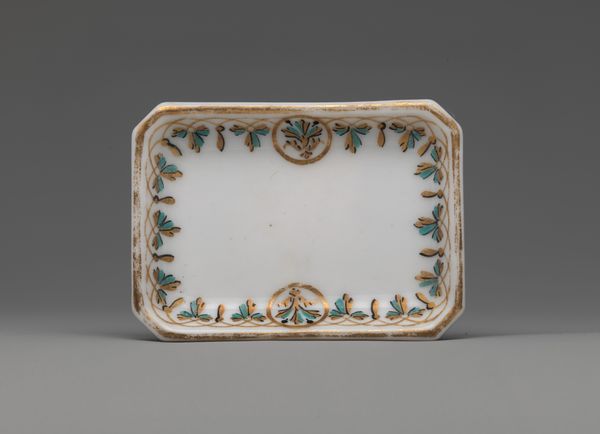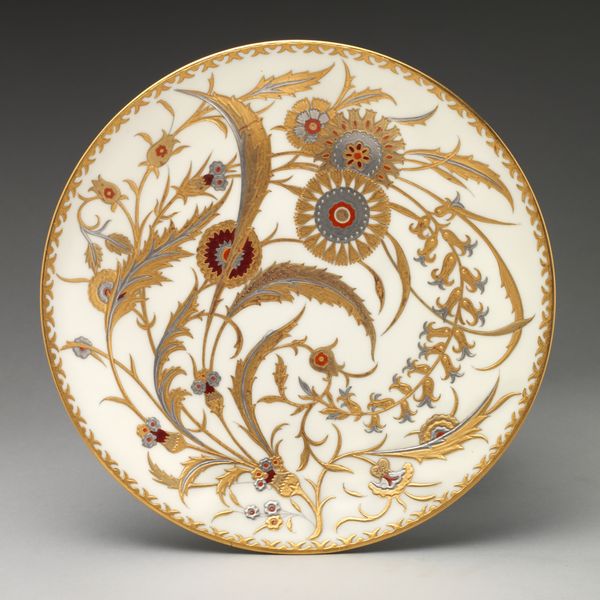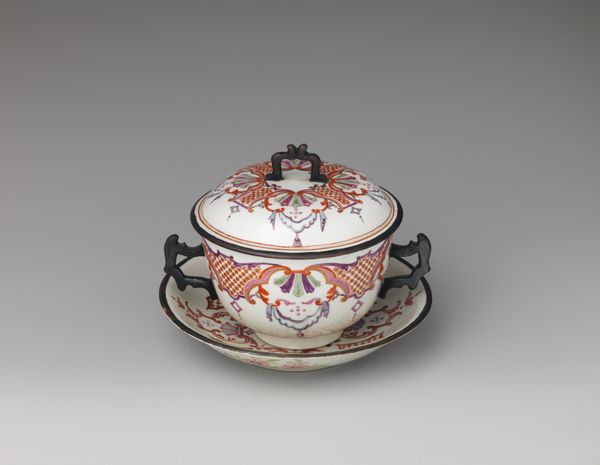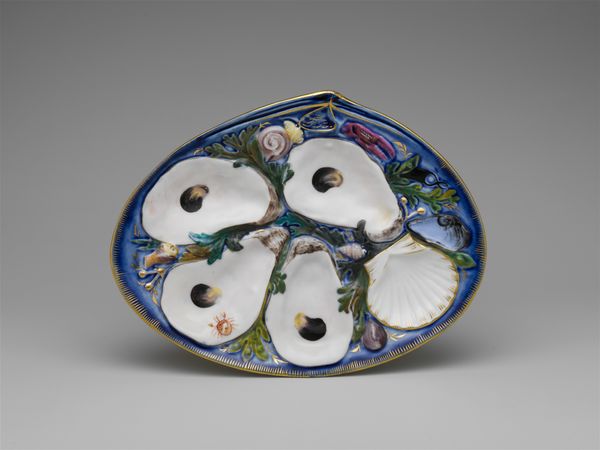
ceramic, earthenware
#
ceramic
#
earthenware
#
stoneware
#
ceramic
#
united-states
#
decorative-art
Dimensions: 2 5/16 x 9 13/16 x 7 15/16 in. (5.9 x 24.9 x 20.2 cm)
Copyright: Public Domain
Editor: We’re looking at a ceramic bowl made in 1885 by the Union Porcelain Works. It has this delicate, almost ethereal quality, with its pale surface and dainty leafy details. What’s your take? What stands out to you? Curator: Oh, that bowl sings of spring mornings, doesn't it? Its asymmetrical shape dances with a quiet rebellion, not quite conforming to expected lines. The craftsman certainly found a unique balance here, it reminds me of a story where imperfections are celebrated, like kintsugi—do you know it? It's this Japanese art of mending broken pottery with gold, celebrating flaws. I wonder if this artist wanted us to embrace the whimsical, to see the beauty in asymmetry, don’t you think? Editor: It makes sense. So it’s about finding beauty where you don't expect to find it. But beyond its form, what can it tell us about its time? Curator: Well, look at that gold trim! It screams luxury. Consider the period: America, riding the wave of industrial growth, reaching for sophistication. These weren’t mere functional objects; they were statements. Status symbols served with tea, little everyday sculptures for those who had the means. But more than that, they captured a nation's ambition—always looking upward, sparkling, hoping, like a fresh bloom pushing through the earth. It’s pure hopeful exuberance, isn't it? Editor: It really does open a window to that era, the gilded age…a fancy bowl carrying so much cultural weight. Curator: Indeed. What appears simple at first glance whispers of broader human aspirations, it's that desire for beauty that drives our creativity, what makes you see something new today? Editor: Today, I saw history reimagined, beauty in simplicity, and how everyday objects become silent storytellers. I am grateful for these new impressions and the ability to think about details beyond immediate viewing, that is very helpful! Curator: Wonderful, because art should invite that. If that has occurred for at least one person, it has done it's job.
Comments
No comments
Be the first to comment and join the conversation on the ultimate creative platform.
